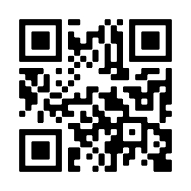Western U.S. Dialects: The Language of the Open Frontier
American English is full of regional differences, and the Western United States is no exception. From California to Colorado, this vast region blends influences from different cultures, histories, and even climates. For English language learners, understanding these regional variations can improve listening comprehension and cultural awareness.
In this post, part of our U.S. Regional Dialects series, we’ll explore what makes Western dialects unique—and how you might hear English spoken in places like California, Nevada, Arizona, and beyond.
The Open Frontier, Rugged Individualism, & a Pioneering Spirit
Spacious landscapes, rugged individualism, and a pioneering spirit define the Western United States—and its dialects reflect that independence. Unlike the strong accents of the Northeast or the South, Western dialects are known for their relaxed speech patterns and clear pronunciation, often considered an offshoot of the Midwestern accent. But don’t be fooled—Western English has plenty of regional quirks, from California slang to the unique expressions of the Rocky Mountains. Let’s take a closer look at how the American West has shaped modern English.
The Western dialects of the United States, spoken in states like California, Oregon, Washington, Nevada, Colorado, and parts of Utah, reflect the vast and diverse history of the region. These dialects are shaped by the migration of settlers from across the country, the influence of Native American languages, and the integration of Spanish from Mexico. Known for their relaxed tone and adaptability, Western dialects are among the most dynamic in the U.S.

Defining Features of Western Dialects
Unlike the Southern or Northeastern dialects, Western American English is sometimes described as a “general” or “neutral” accent. However, that doesn’t mean it’s all the same! There are still many regional features and distinct patterns that give Western English its own flavor.
Pronunciation
- Vowel merging: In much of the West, words like cot and caught sound exactly the same. This vowel merger is common in California, Utah, and Arizona, among other states.
- Example: Don and Dawn are pronounced the same.
- Fronted vowels: Words like “dude” sound like “dewd.”
- Relaxed enunciation: Casual and laid-back pronunciation reflects the region’s culture.
- Example: dropping the “t” sound (e.g., butter becomes budder).
- Spanish Influence: Pronunciations may also reflect bilingual influence from the large Hispanic population and proximity to Mexico.
Grammar
- Grammatically close to Standard American English, with fewer regional variations compared to other parts of the country.
- Frequent use of contractions and informal speech patterns in casual conversation as well as Informal expressions: “like,” “literally,” “whatever,” “totally”.
- “Uptalk” and “Vocal Fry”: These speaking patterns are often associated with younger speakers in Southern California, especially in areas like Los Angeles.
- Uptalk is when your voice rises at the end of a statement, making it sound like a question (listen to an example).
- Vocal fry is a creaky, low-pitched tone often used at the end of sentences (listen to an example).
- These patterns have been popularized in pop culture but are not unique to California anymore—they’ve spread across the U.S.!
Vocabulary
- Because of the proximity to Mexico and a large Hispanic population, Spanish has had a strong influence on Western dialects. Borrowed terms from Spanish include:
- “Canyon” – A deep ravine.
- “Mesa” – A flat-topped hill.
- “Rodeo” – A cattle roundup or competitive event.
- The West, especially California, is known for influential slang. Words and expressions born in California often spread nationwide.
- “Hella” – (Northern California) meaning “very” — “That test was hella hard!”
- “Gnarly” – Awesome or extreme, often associated with surf culture.
- “The 405” – Referring to highways in Southern California with “the” before the number.
- “Like” – Example: “I was like, totally shocked!”
Regional Variations in Western Dialects
California English
- Known for “Valley Speak,” popularized in the 1980s and still influential in casual conversations.
- Phrases like “I’m stoked” (I’m excited) and “No worries” (It’s okay) are common.
Pacific Northwest Dialect (Washington and Oregon)
- Slight Canadian influence, with an emphasis on clear enunciation.
- Terms like “spendy” (expensive) and “cougar” (a large mountain lion) are regionally specific.
Mountain West Dialect (Colorado, Nevada, Utah)
- A more neutral accent, with terms influenced by ranching and outdoor culture, such as “range” (open land) and “trailhead” (starting point of a trail).
Common Western Phrases & Expressions
- “I’m headed up to the mountains” – Indicates a trip to higher elevations, common in Colorado and Nevada.
- “The Valley” – Refers to California’s Central Valley or the San Fernando Valley, depending on the context.
- “It’s a dry heat” – A common description of weather in the arid Southwest.
- “Crushin’ it” – Excelling or doing a great job, often heard in California.

Spanish Influence on Western Dialects
The Western United States has deep historical and cultural ties to Spanish-speaking populations. States like California, Arizona, New Mexico, Texas, and Nevada were once part of Spanish or Mexican territory. As a result, the Spanish language has had a lasting impact on the way English is spoken in the region.
This influence is especially noticeable in place names, everyday vocabulary, and pronunciation patterns, particularly in areas with large bilingual or Hispanic communities.
Place Names of Spanish Origin
Many cities, counties, and geographic landmarks in the West have names that come directly from Spanish. These names are often pronounced with a blend of English and Spanish sounds, depending on the speaker’s background.
Examples:
- Los Angeles – “The Angels”
- San Diego – “Saint Diego”
- Nevada – from nevada, meaning “snow-covered”
- Colorado – “colored red”
- Rio Grande – “Big River”
For ESL students, learning the original Spanish meaning and practicing the correct pronunciation of these names can boost both language and cultural fluency.
Everyday Vocabulary in English from Spanish
Over time, many Spanish words have been adopted into American English, especially in the West. These words are often related to food, culture, the landscape, or social life. Some are used casually in English conversations even by non-Spanish speakers.
Common Borrowed Words:
- Canyon – from cañón
- Ranch – from rancho
- Fiesta – party
- Taco, burrito, enchilada – popular Mexican foods now part of American cuisine
- Patio – an outdoor area
Code-Switching & Spanglish
In areas with large bilingual populations—such as Southern California, El Paso, or parts of New Mexico—it’s common to hear code-switching, where speakers shift between English and Spanish in the same conversation.
Example:
- “Let’s go to the store y después we can get lunch.”
- “She’s super smart—¡una genia!”
This blending of languages, sometimes called Spanglish, is a natural part of how communities express themselves and connect with both cultures.
Pronunciation & Rhythm Influences
Spanish has also influenced the intonation and rhythm of English in the West. In bilingual communities, English may be spoken with slightly different stress patterns or sounds that reflect a speaker’s Spanish background.
This is an important point for ESL learners: different English speakers may sound a little different based on their first language—and that’s okay! Recognizing these variations helps you become a better listener and more flexible communicator.
Native American Influence on Western Dialects
The Western United States is home to many Native American tribes, and their influence can still be seen in both vocabulary and place names. While Native American languages are not typically spoken by the general population, they have shaped local dialects, especially in terms of pronunciation, rhythm, and everyday words.
Place Names & Pronunciation Patterns
Many towns, rivers, and geographic features across the West have names derived from Native American languages. These names often preserve unique sounds and syllable patterns unfamiliar to English learners.
Examples:
- Seattle (from the Duwamish chief Sealth)
- Tahoe (from the Washo word for “lake”)
- Yakima (from the Yakama Nation)
- Spokane (from the Salish word meaning “children of the sun”)
Learning how to pronounce these names can be challenging for ESL students, but it’s also a great way to understand local culture and history.
Loanwords from Native American Languages
While not as common as Spanish borrowings, a number of Native American words have entered everyday English, especially in the Western U.S. These are often nature-related terms, reflecting the connection to the land.
Examples:
- Moccasin – a type of soft leather shoe
- Coyote – a wild dog native to North America (from Nahuatl)
- Totem – a symbol or emblem from Indigenous spiritual traditions
- Pueblo – from the Spanish word, originally referencing Native American communities in the Southwest
- Chipmunk – likely originated from the Ojibwe word “ajidamoo” (or the Ottawa dialect “ajidamoonh“), meaning “one who descends trees headlong” or “red squirrel”
- Pecan – originates from an Algonquian language, meaning “a nut requiring a stone to crack”. Also pronounced differently depending on where you are in the U.S.
- Chocolate – Often said to be from Nahuatl xocolātl
Cultural Terms & Influence
In areas with larger Native populations—like Arizona, New Mexico, and parts of the Pacific Northwest—you might hear terms and expressions that come from tribal traditions or cultural references.
For example:
- In New Mexico, words like “kiva” (a ceremonial room) and “hogan” (a traditional Navajo home) are used even outside Native communities.
- Some English speakers in the region might also adopt storytelling styles or rhythm from Native oral traditions, which can subtly influence the tone and pacing of regional speech.

The Cultural Significance of Western Dialects
The way people speak in the Western United States is more than just pronunciation and vocabulary—it’s a reflection of the region’s identity, history, and cultural diversity. Western dialects have shaped (and been shaped by) everything from local traditions to Hollywood films, creating a strong presence in American pop culture and international media.
For English learners, understanding these cultural layers helps deepen not just listening skills, but also appreciation for how language reflects real-life communication in the U.S.
Hollywood & the “California Accent”
The West Coast, especially Southern California, is home to the entertainment industry. Because of this, many English learners around the world are first exposed to American English through movies, TV shows, and music created in the West.
The “California accent” has become so widespread that it’s often mistaken for “standard” American English. Examples in pop culture:
- Characters in shows like Clueless, The O.C., Portlandia, and Valley Girl
- Celebrities like surfers, influencers, and YouTubers who speak with “West Coast vibes”
The Western Image in American Identity
The Western U.S. is often associated with the spirit of freedom, innovation, and individualism—themes that are reflected in the dialects and vocabulary used in the region.
Think of:
- Cowboys and ranchers in Western movies using words like reckon, y’all, or howdy (some shared with the South)
- The slang of Silicon Valley, where terms like startup, hack, and disrupt have become global tech lingo
- Urban West Coast culture influencing trends in fashion, music, and slang, especially through hip-hop, skateboarding, and surf communities
These dialects carry the identity and values of the people who speak them—whether that’s laid-back beachgoers, high-speed tech professionals, or Indigenous communities preserving ancestral traditions.
Social & Generational Influence
Western dialects also vary by age and background. Younger generations tend to use more slang, while older speakers may preserve regional pronunciations or cultural terms.
The West is one of the most linguistically diverse parts of the U.S., thanks to immigrant communities, Indigenous tribes, and Spanish-speaking populations.
This creates a blended, evolving dialect that reflects social change and inclusion.
Example:
A conversation in Los Angeles might include:
- English grammar
- Spanish expressions
- Slang influenced by African American Vernacular English (AAVE) or youth culture

Why Understanding Dialects Matters for ESL Students
For English learners, being exposed to Western dialects in movies, music, and everyday conversation is a great way to build fluency and cultural understanding. Learning how people really speak in the Western U.S.—not just textbook English—can help you:
- Understand humor, tone, and casual expressions
- Sound more natural when speaking
- Connect more easily with native speakers in the U.S.
Remember: Language and culture go hand in hand. By exploring regional dialects, you’re not just learning how to speak—you’re learning how to connect.
Whether you’re interested in the laid-back speech of California or the frontier-influenced dialects of the Rockies, Western English is as diverse as the landscape itself. Understanding these accents can help ESL learners communicate confidently in different regions of the U.S. At Excel English Institute, we specialize in pronunciation, conversation skills, and cultural fluency.
Explore our ESL programs and take your English to the next level! Start learning with us today!
Excel English Institute’s U.S. Dialects Guide for ESL Learners
Below is a list of the dialects we will be exploring in this series. Links will be added as they are published, so check back for updates!
- Discovering U.S. Dialects: A Guide for ESL Learners
- Midwestern Dialect: The Heart of Neutral American English
- Southern Dialects: The Warm & Melodic Voices of The South
- Northeastern Dialects: The Voice of America’s Historical Heart
- Western Dialects: The Language of The Open Frontier
- Southwestern Dialects: A Blend of Cultures & Languages
- Appalachian Dialect: Preserving The Language of The Mountains
- Hawaiian Pidgin: The Unique Voice of The Aloha State
- African American Vernacular English (AAVE): A Rich & Influential Dialect













